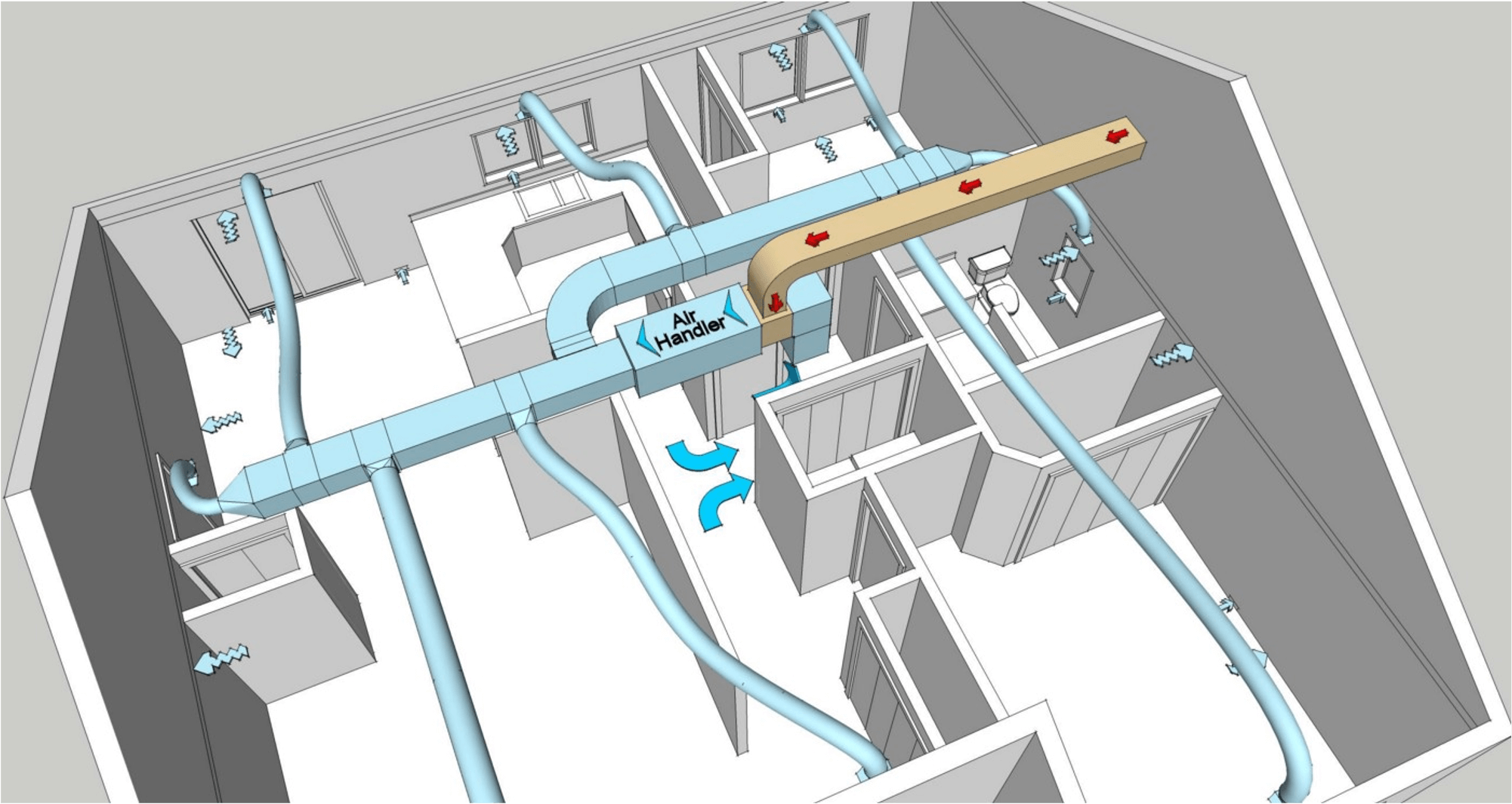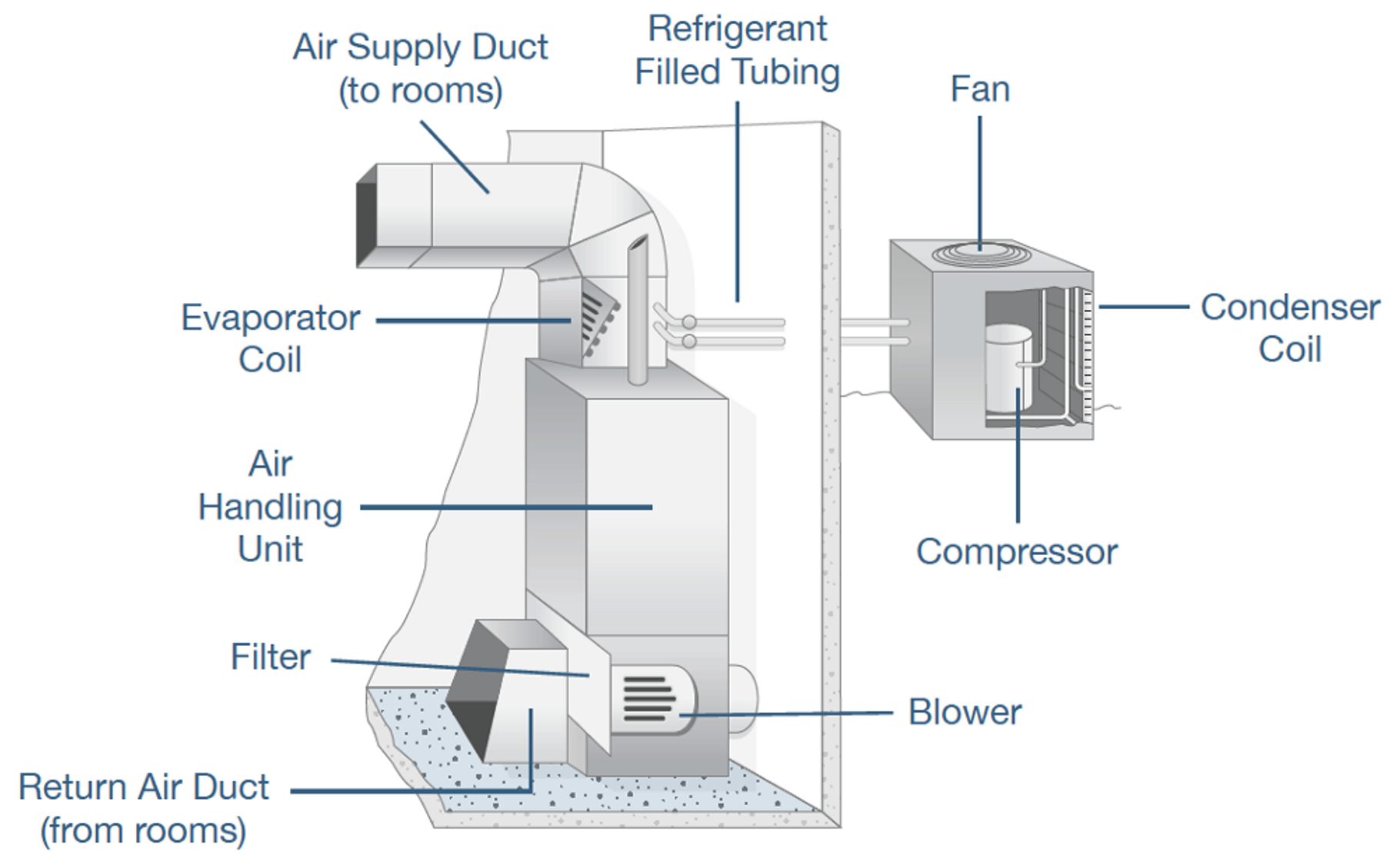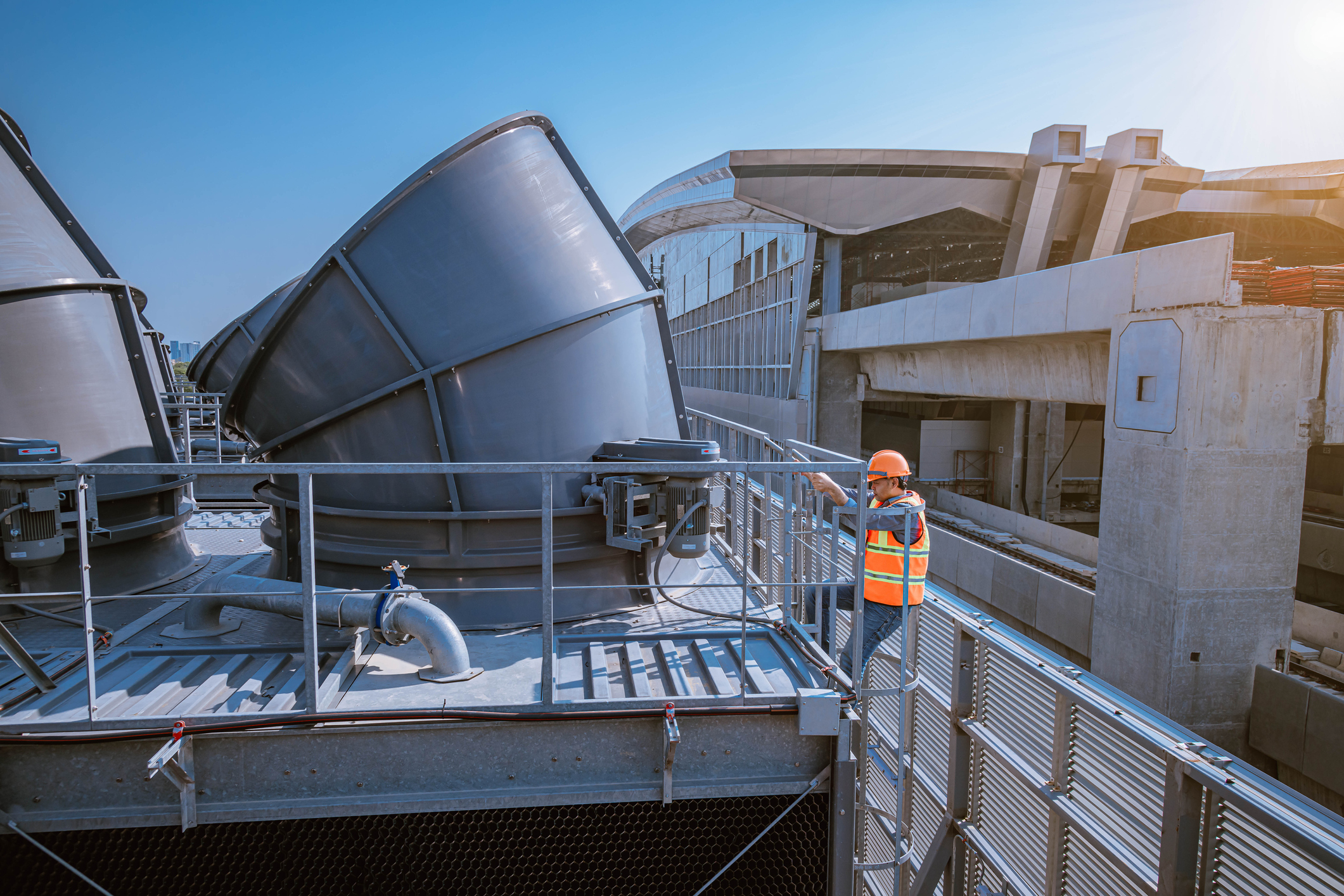An air handling unit, or AHU, is HVAC equipment designed to regulate and circulate air throughout a space. Air handlers typically connect to a ductwork ventilation system. This system distributes conditioned air throughout a building and returns it back to the unit.

The capacity of an air handler is commonly measured by the amount of air it conditions and distributes. You calculate this measurement in volumetric units known as CFM (cubic feet per minute).
Let’s say you have a space that is 10ft x 10ft x 10ft = 1000ft³, and a 500 CFM air handler. In this scenario it would take two minutes for the old air in the room to be entirely replaced by fresh, conditioned air from the air handler.
An air handler is usually a large metal box containing a limited subset of the components of the refrigeration cycle. Air handlers contain one of two cooling elements: chilled water or refrigerant.
What if you have an unusual space? The sky is the limit when it comes to designing an air handler. If a standard air handling unit is not right for an application, you can design a custom air handling unit to meet the space and performance constraints. Such customizations can impact the size of the air handler and its interior components. Customized air handlers can be double the cost of standard units, but typically only specific applications like surgical suites or chemical laboratories require them.
How an Air Handling Unit Works

First, air returns from the space it’s ventilating, passing back through a duct to the air handling unit. Here, the return air typically moves into a mixing box and blends with warmer, vented in outdoor air. However, not all air handlers use fresh outdoor air. Many simply recirculate the cool air present in the space.
The air continues through a rack of air filters. Then it moves across the evaporator’s cooling coil, which contains cold water or refrigerant to condition the air. Finally, the blower pushes it through the ductwork and throughout the space. Sometimes there’s a small heating element just after the evaporator coil to control the air’s humidity before it enters the space.
You can control basic air handlers with something as simple as a thermostat. However, many facilities have a central computer to handle the complexity of managing multiple air handling units.
Improve Your HVAC Management
At Building Engines we know how critical effective HVAC management is to high performing building operations. That’s why we created a quick five-minute guide to better HVAC management. You’ll learn: why you should digitize your HVAC inventory data, tips to maximize HVAC performance and lifespan, and ideas to make capital planning a breeze.












